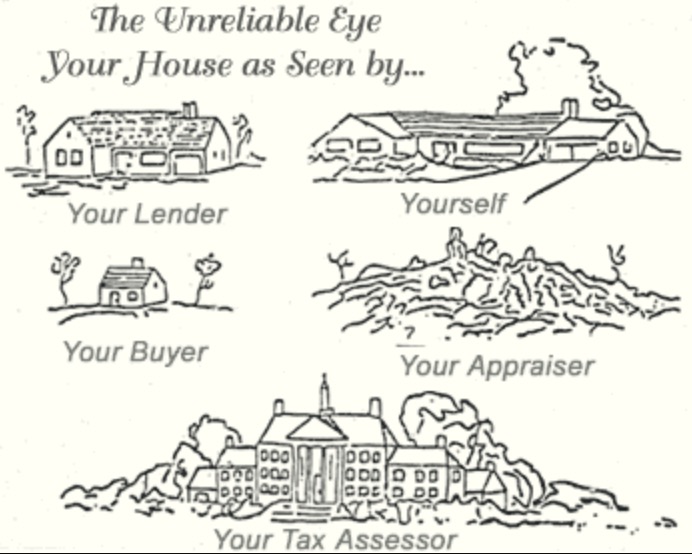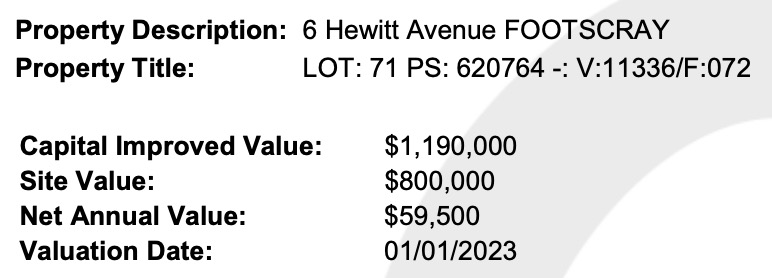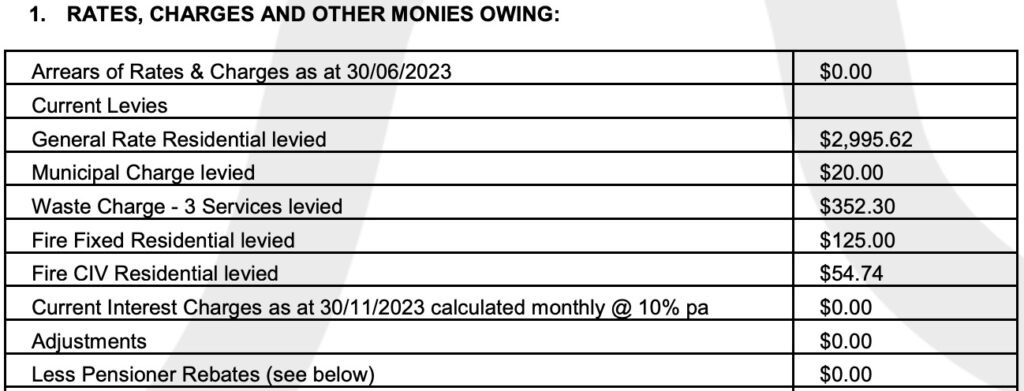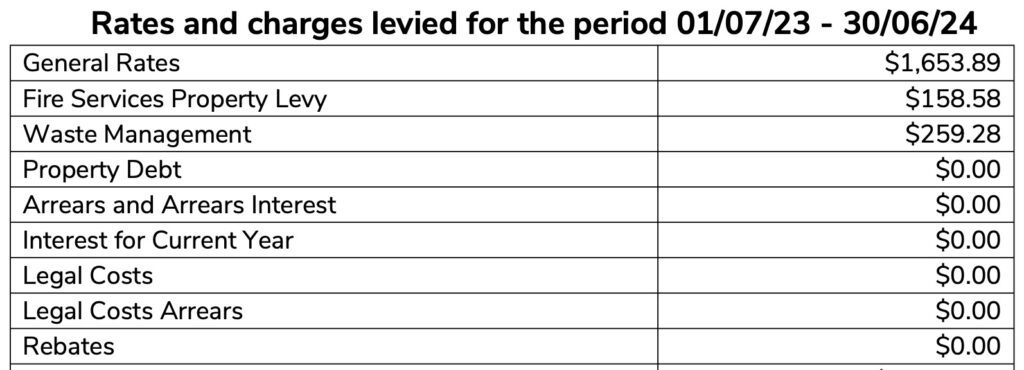We often have clients refer to the council valuation when setting a bidding limit, but this is not a reliable indicator for likely price.
This cartoon has been going around for years, and while we can laugh about it, the point of it is that appraisals vary greatly.

In Victoria, rates notices are issued by the local council and they are usually based on an algorithm calculation or a basic indexation.
“Each year, all rateable properties are revalued with a valuation date of 1 January. Council rate and valuation notices are typically issued between July and September each year. The valuation included in the notice will refer to the valuation as at 1 January of that year.” (Source: land.vic.gov.au)
We all know that a certified valuer doesn’t typically walk through our property each year, and economically this wouldn’t be feasible for our local councils anyway.
“The Valuer-General or municipal councils will determine the valuation of a property as part of the annual general valuation process. Once a general valuation is completed, councils receive the valuations to calculate the rates that land owners pay.
Councils can also adopt a system of differential rates based on CIV, (capital improved value) or NAV, (net annual value).
Differential rates are used to apply a different rate in the dollar to separate classes of property. Classes may include residential, rural or commercial properties.
Councils also collect the fire services property levy on behalf of the State Revenue Office. This levy is included in a land owner’s rates notice.” (land.vic.gov.au)
Capital improved value is the figure that most people look at, and it is this figure that can throw a lot of buyers when they are scanning through a contract of sale.
The capital value of a property is almost always different from the market value of a property, however.
If our council rates notice stated a valuation that was higher than market value, they would be faced with objections from rate payers constantly. In almost every case we’ve witnessed, the council valuation has fallen substantially short of the market value of the property.
Take these two recent sales in two separate local government areas for example;

This stunning townhouse in the local government area of the City of Maribyrnong sold at auction with competitive bidding for $1,511,000. The capital improved value applied as at Jan 1 was 21% below the market value.

And this unit in the LGA of the City of Merri-bek sold recently for $889,000, some 19% below market value.


It is important to note that while council valuations are all sourced by the valuer general, the level of rates per dollar of value is unique to each local government area. Individual councils determine how they will apply the rates and tax their land owners. For example, if we compare each of the above two properties, we can see that the council rates surcharge for Maribyrnong residents is higher than that of Merri-bek residents based on the rate per capital improved valuation dollar.


Land owners can challenge their valuations if they feel they are too high, but they cannot challenge their rate surcharge.
Understanding council rates notices (and valuations) is important, particularly when working out what information not to rely on when determining market value and likely selling price.
REGISTER TO OUR NEWSLETTER
INFORMATION
CONTACT US
1A/58 ANDERSON STREET,
YARRAVILLE VIC 3013
0422 638 362
03 7000 6026
CATE@CATEBAKOS.COM.AU
